
By Judy Carmack Bross

Murray Bay view of the St. Lawrence River. Sublime Stress Solution.
Does September’s pace shout out for stress solutions? This column is about getting back down to earth with a soft landing after fine summer days. With thanks to our experts who share a variety of solutions.
As columnist Mike Traynor writes in this issue, summer burst forth in Lincoln Park, a bounty of beauty to its beholders. For me, summer further north in Murray Bay (La Malbaie), Quebec meant wonder, serenity and gratitude.

Sampling of the freshest of vegetables at the Saturday Murray Bay outdoor market.
Could air really be this fresh and under-appreciated rutabaga turn out to be a favorite dish just because everything tastes so delicious there? Working and writing on a plain white table in the old Charlevoix style in a yellow room—a color matching the sunshine there selected by my late husband John Bross–hiking along St. Lawrence River trails, visiting the magnificent Quatre Vents garden created by master gardener Frank Cabot, and private gardens such as Chicagoan Todd Schwebel’s and year-round resident Michel St-Pierre’s who had a lily named in his honor—made gratitude a synonym for summer.
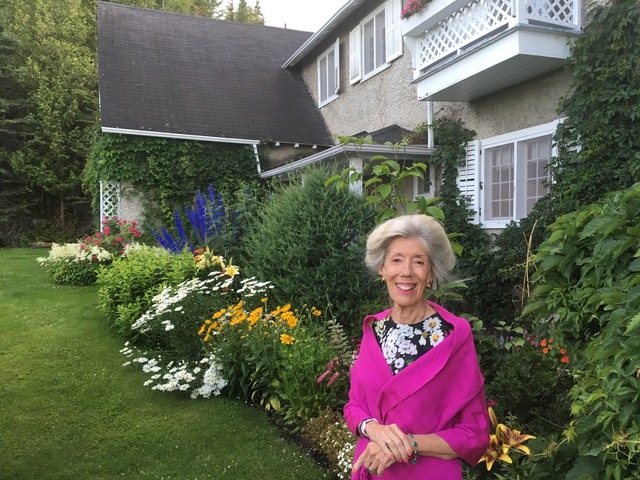
The author in Todd Schwebel’s remarkable Murray Bay Garden. xxxxxxxxxxxxxxxxxxxxxxxxxxxxxxxxxxxxxxxxxx xxxxxxxxxxxxxxxxxxxxxxxxxxxxx xxxxxxxxxxxxxxxxxx xxxxxxx |
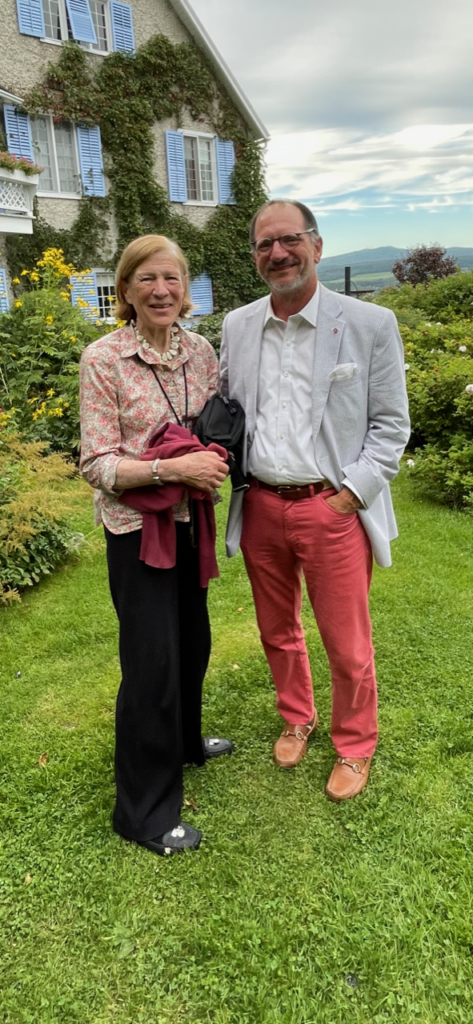
Todd Schwebel, with Edith de Montebello, in his Murray Bay Garden |
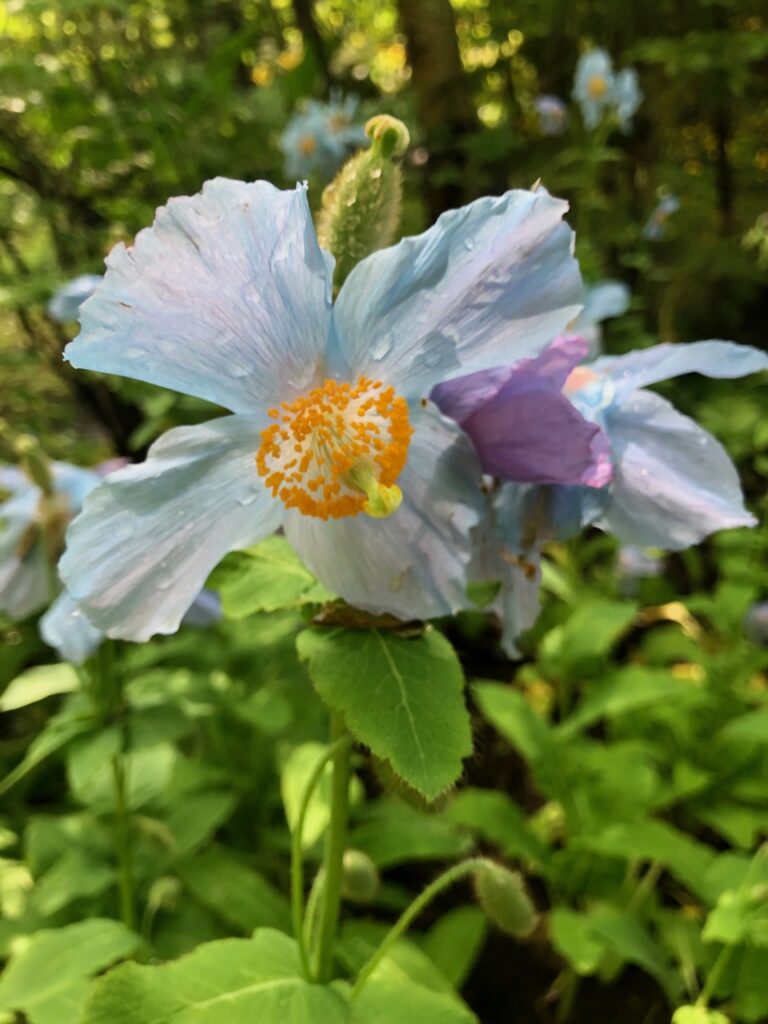
Rare Himalayan blue poppy in Quatre Vents Garden. |
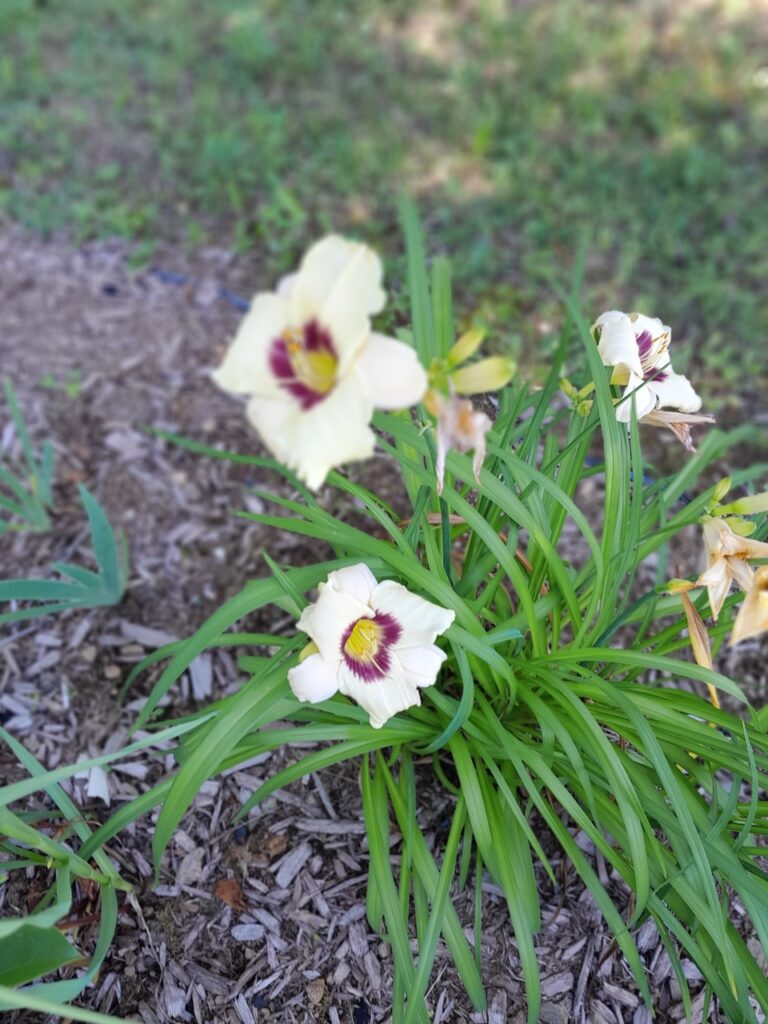
The Michel St-Pierre lily |
As I drove back home across Quebec, Ontario, then Michigan, to Chicago in my faithful car Murray, tasks loomed large. I interviewed two experts on stress in hopes that their tips will be of help to you as well.

Yoga expert Jim Kulackoski
Jim Kulackoski, yoga and Vedic Sciences expert, says: “Stress is really more of an experience than an actual thing. The experience of stress is the experience of being stuck. When we are stressed, our energy ceases to flow freely and becomes stagnant. We experience a lack of freedom, creativity, and a lack of self-expression. We feel powerless within our surroundings or a particular situation.”

Mar Soraparu, BIAN’s Co-founder and Chief Wellness Officer
We also spoke with another favorite expert, Mar Soraparu, BIAN’a Co-founder and Chief Wellness Officer, who told us:
“When it comes to stress, I believe in having a positive relationship to stress management – referring to practices, behaviors, or factors that help individuals effectively acknowledge, cope with, and reduce stress. Stress is a common part of life, and how people respond to it can greatly impact their overall well-being. When we resist the fact that we are stressed, we aren’t welcoming in the possibilities for understanding it in the first place. When we don’t take care of our bodies, we are increase the likelihood, length, intensity of stress as well.”
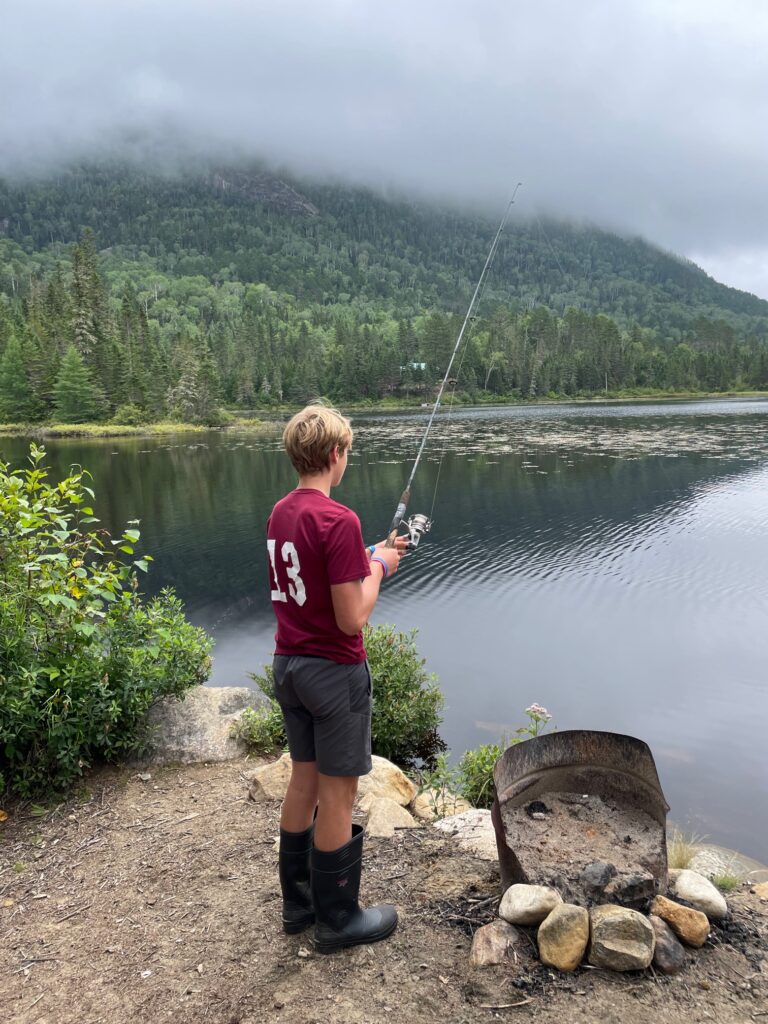
“When you feel stress, get your energy moving,” Kulackoski told us.
“Anything that creates momentum and moves your energy will make you feel a release of stress. This can be exercising, like going for a walk or run, or physical yoga, swimming or any physical activity which gets the energy out of your head and circulates it in your body.
“Another important way to free up and release the energy is to do activities which unblock your mind and create a mental sense of momentum. These can be creative acts, or activities in which you feel self expressed, like singing, writing, journaling, or even reading, watching a movie or play that has a cathartic feeling to it.”
Kulackoski continued:
“Curate your environment, relationships and your life. One of the most essential things you can do to enhance peace of mind is to create an environment where energy flows freely, which reduces the tendency for stagnation and the experience of stress in your immediate environment. An easy place to start is with your own home. I recommend going through everything and discarding what you no longer need, or things that you never really needed in the first place. These may include clothes you never wear, outdated or broken electronics, books you will never read again and even furniture you don’t like the aesthetic of, basically anything that serves no purpose, other than taking up space.”

Eugenie, “a spark of joy”
“Make your space into a space where energy flows freely, a place where you are related to everything you come into contact with in a positive way. For me, I like to take the Marie Kondo approach in only having things around me that ‘spark joy’. More importantly, this exercise in curating your surroundings is practice for making powerful decisions and being in the center of your own life. By really knowing what you want and have, you are much closer to living in a state where you feel you are at the cause of your life rather than at its mercy.
“All you have is your attention. In my experience, learning to consciously control how you use your attention is one of, if not the most, important things you can do in life. Curating your life ultimately means being very aware of what you are putting your attention at any time. As you begin to go through the process of curating your life, you will inevitably uncover areas of life that cause you stress, certain relationships, certain types of activities, certain kinds of news, movies or tv shows, etc. Ultimately, it is a wonderful process which not only reduces the potential for stress but also helps you to know yourself better, allowing you to create a richer and fuller experience of life all around.
“You can eliminate stress before it starts by understanding its root cause. Although it seems as if stress comes from outside circumstances, if you observe, it is actually our own personal reactions to the circumstances in our lives that gives the experience of stress itself.

Alice Cullina caught a bald eagle and a blue heron enjoying the St. Lawrence River near Murray Bay.
“Take for an example–a situation like traveling to a foreign country. For some people, this experience is exhilarating, for others it causes so much stress and anxiety that they shy away from doing it. This example demonstrates that stress is not necessarily due to the external circumstance, but rather our thoughts and beliefs about them.
“Although this is somewhat easy to understand intellectually, in practice, it is difficult. This is because we accept just about anything we believe or think as gospel, without ever questioning it.
In my experience, getting to a place of peace in life requires really knowing who I am and what I believe, and ultimately transcending those limiting beliefs and ideas.
“There are many ways to do this, but a good way to start out, is to become objective to your own thoughts about the situations you encounter in your life. Journaling is a great place to start. It can allow you to really get into a space where you “can see your own thoughts, beliefs and ideas bout things and the process of writing them down can allow for an experience of detachment and objectivity from them.
“Another practice I recommend is to meditate. Meditation is the act of learning how to consciously direct attention, which as I mentioned earlier is all we really have in life. When we meditate, we are constantly confronted with the contents of our minds, our thought, beliefs, emotions and ideas. We ultimately learn how to shift our attention onto an object of focus rather than onto random thoughts, beliefs and ideas. In other words, when we meditate, we learn about what is really in our own heads and how to move beyond these limiting beliefs.
There are many types of meditations. I personally recommend learn a specific technique that provides a framework for focus, like transcendental meditation, or Kriya Yoga.”

Mar Soraparu
Mar Soraparu gave us three categories that can be a reflection exercise to navigating stress beginning with an internal dialogue check-in:
What am I saying to myself about the stress I am feeling and is this kind or harsh?”
“Who am I allowing to stress me out that is out of my control?”
“What do I need to be doing that is within my control?
Soraparu feels the same is true with nutrition practices and advises us to also check in with ourselves.
“Is what I am consuming a long-term positive choice or a short term fix?
“How much caffeine, sugar, or take-out food have I been consuming?
“How can I increase whole foods, water, and mindful consumption (slow and focused)?
Soraparu recommends that we ask ourselves further questions as well.
“What are my AM and PM bookends (before bed and first thing when waking up) and does this add stress or decrease stress?”
“How much rest am I allowing myself and why?
“What kinds of physical activity do I partake in and is it balanced?
“Taking the time to reflect on these areas will provide great insight into what you could be stopping, and what you could be starting in order to support stress and understand it with great context,” Soraparu said.

Flowers burst forth outside the Murray Bay Protestant Church.
Kukackoski offers that: “gratitude is essentially the opposite of stress.”
“When you experience gratitude, you are experiencing the free flow of energy. According to UC Davis Health, the experience of gratitude is related to 23 percent lower levels of stress hormones such as cortisol. Try to recreate the experience of gratitude on a daily basis. One surprisingly simple, yet powerful way to do this is to make a list of things you are grateful for everyday. You can write down as many things as you can think of, but try to think of at least three things that you are grateful for and note them. This will begin to train yourself to live more often in a state of gratitude, rather than stress.”
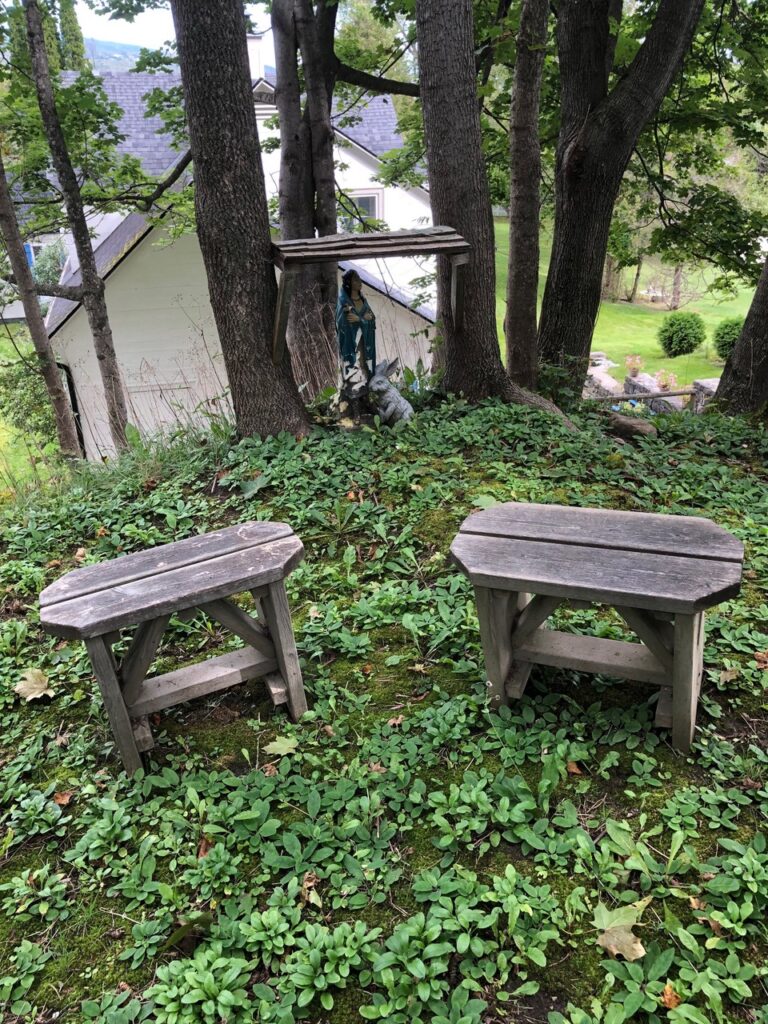
The Secret Garden, for listening, making wishes and showing gratitude.
At the end of a Murray Bay day three generations often gather in a “secret garden” for just a bit to describe the sounds we hear, talk about what we are grateful for that day, and make a wish after spinning around three times. And secret gardens can occur anywhere I am guessing.
Kulackoski says: “Getting to the root cause of stress is a long term practice, one of the most important and worthy things you can do in your life. Life always throws us curveballs, it’s the nature of being human to experience things that challenge us to grow and evolve beyond we previously knew our self to be. Ultimately, therefor, stress could be a really good thing, because it shows us who we have been, and what we can become.”







